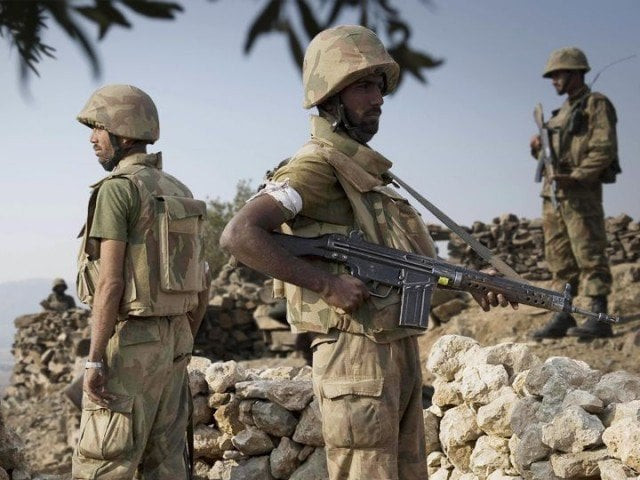Two years of Zarb-e-Azb — what next?
We need to accept the fact that we are at war against an ideology inspired by a distorted version of religion

The success of the operation is evidenced by the data released by ISPR on the occasion of the operation’s second anniversary. PHOTO: EXPRESS/ FILE
The challenge of reconstruction, rehabilitation and resettlement of internally displaced persons remains formidable. This is a colossal task and would take at least a couple of years, a huge sum of money and special administrative skills to complete the job to everyone’s satisfaction and without giving rise to any unintended negative consequences. The lessons learnt on this front from the South Waziristan experience, which continues to remain largely unfinished, would surely help. Once the resettlement phase is over, the civil administration would be required to establish the rule of law and create the enabling environment for normalcy to return to civic life. This phase of resettlement would need to be dovetailed with the initiation of the implementation of Fata reforms and perhaps the merging of the tribal areas with Khyber-Pukhtunkhawa. The process of border management that the security agencies have started in recent weeks would need to be continued simultaneously so as to bring to an end the unhindered terror traffic across the Durand Line.
But this would be a job only half done. Punjab needs to be cleansed of sectarian as well as jihadi groups that are well-entrenched in the province with deep political roots. Some of these groups are running so-called shariat courts with extraordinary impunity perhaps because the political forces in Punjab either ideologically identify with these groups or are mortally afraid to take them on. We are still groping in the dark with regard to madrassa reforms. More than the madrassa managers, it is their political apologists like Interior Minister Chaudhry Nisar, who have proved to be the biggest stumbling block in the way of implementation of these reforms.
Let us for once stop playing the ostrich and accept the fact that we are at war against an ideology inspired by a distorted version of religion. Unless there is work done to come up with a people-friendly counter-narrative based on the true values of Islam to counter the so-called militant Islam, it would be almost impossible to get rid of the menace of terrorism, militancy and extremism that is eating into vitals of the Quaid-e-Azam’s Pakistan. The best counter-narrative that could be offered against the obscure narrative of the militants is the one that is based on the father of the nation’s August 11, 1947 address to the first Constituent Assembly, which in turn has basis in religion as well. The Quaid had emphasised in his address the concept of equality of all citizens in the eyes of the state regardless of colour, caste or creed. This address itself is said to have been inspired by the Charter of Madina delivered by the Holy Prophet Mohammed (peace be upon him). Two of the salient features of this charter say it all: all parties included in the charter, Muslims as well as non-Muslims had the freedom to practise their religion; and all citizens of the state had equal rights and responsibilities and were protected against excess and oppression.
Published in The Express Tribune, June 19th, 2016.
Like Opinion & Editorial on Facebook, follow @ETOpEd on Twitter to receive all updates on all our daily pieces.














COMMENTS
Comments are moderated and generally will be posted if they are on-topic and not abusive.
For more information, please see our Comments FAQ